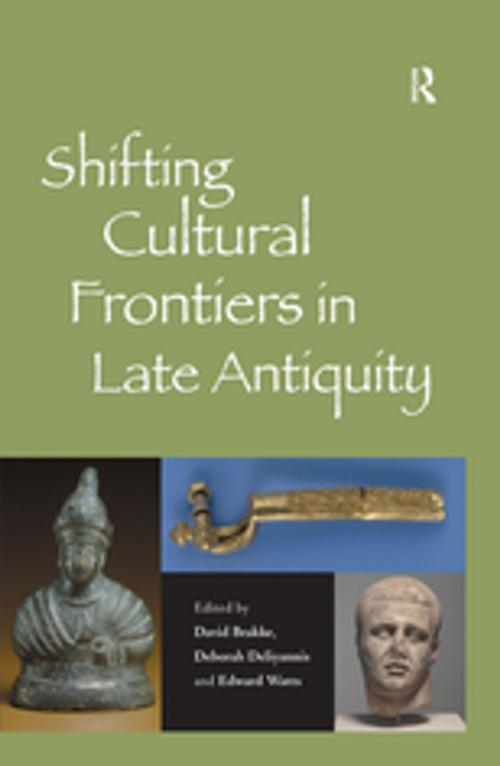| Author: | David Brakke, Deborah Deliyannis | ISBN: | 9781351900317 |
| Publisher: | Taylor and Francis | Publication: | December 5, 2016 |
| Imprint: | Routledge | Language: | English |
| Author: | David Brakke, Deborah Deliyannis |
| ISBN: | 9781351900317 |
| Publisher: | Taylor and Francis |
| Publication: | December 5, 2016 |
| Imprint: | Routledge |
| Language: | English |
Shifting Cultural Frontiers in Late Antiquity explores the transformation of classical culture in late antiquity by studying cultures at the borders - the borders of empires, of social classes, of public and private spaces, of literary genres, of linguistic communities, and of the modern disciplines that study antiquity. Although such canonical figures of late ancient studies as Augustine and Ammianus Marcellinus appear in its pages, this book shifts our perspective from the center to the side or the margins. The essays consider, for example, the ordinary Christians whom Augustine addressed, the border regions of Mesopotamia and Vandal Africa, 'popular' or 'legendary' literature, and athletes. Although traditional philology rightly underlies the work that these essays do, the authors, several among the most prominent in the field of late ancient studies, draw from and combine a range of disciplines and perspectives, including art history, religion, and social history. Despite their various subject matters and scholarly approaches, the essays in Shifting Cultural Frontiers coalesce around a small number of key themes in the study of late antiquity: the ambiguous effects of 'Christianization,' the creation of new literary and visual forms from earlier models, the interaction and spread of ideals between social classes, and the negotiation of ethnic and imperial identities in the contact between 'Romans' and 'barbarians.' By looking away from the core and toward the periphery, whether spatially or intellectually, the volume offers fresh insights into how ancient patterns of thinking and creating became reconfigured into the diverse cultures of the 'medieval.'
Shifting Cultural Frontiers in Late Antiquity explores the transformation of classical culture in late antiquity by studying cultures at the borders - the borders of empires, of social classes, of public and private spaces, of literary genres, of linguistic communities, and of the modern disciplines that study antiquity. Although such canonical figures of late ancient studies as Augustine and Ammianus Marcellinus appear in its pages, this book shifts our perspective from the center to the side or the margins. The essays consider, for example, the ordinary Christians whom Augustine addressed, the border regions of Mesopotamia and Vandal Africa, 'popular' or 'legendary' literature, and athletes. Although traditional philology rightly underlies the work that these essays do, the authors, several among the most prominent in the field of late ancient studies, draw from and combine a range of disciplines and perspectives, including art history, religion, and social history. Despite their various subject matters and scholarly approaches, the essays in Shifting Cultural Frontiers coalesce around a small number of key themes in the study of late antiquity: the ambiguous effects of 'Christianization,' the creation of new literary and visual forms from earlier models, the interaction and spread of ideals between social classes, and the negotiation of ethnic and imperial identities in the contact between 'Romans' and 'barbarians.' By looking away from the core and toward the periphery, whether spatially or intellectually, the volume offers fresh insights into how ancient patterns of thinking and creating became reconfigured into the diverse cultures of the 'medieval.'















